Surely, all of you have heard of Kamchatka, right?
Well, it’s highly likely that most of you will say “no” to this question. Let’s work on that. By the end of this article you will not know everything about this place but you will definitely know that we’re talking about a wonderful and exciting diving spot.
The so-called Kamchatka Peninsula is an area of around 270.000 km2 situated in the very far away Russian Far East between the Pacific Ocean and the Sea of Okhotsk. For those of you who do know this 1.250 kilometres long peninsula, it is very likely that you know it as the “land of volcanos”. The volcanoes of Kamchatka (and there are around 160 of them) are an UNESCO World Heritage Site. But what about diving?
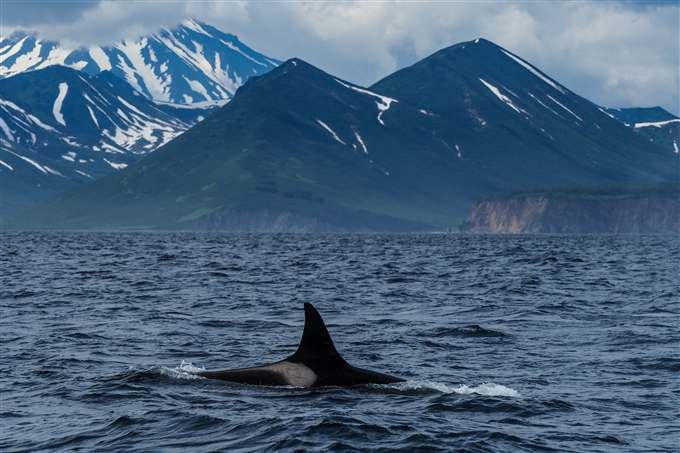
Marcin Dobas • OM-D E-M5 Mark II • M.ZUIKO DIGITAL ED 40-150mm 1:2.8 PRO • 1/2000 • ISO 200
Well, let’s say diving in Kamchatka can be a rather cold affair. Depending on season and depth, water temperatures can range from 14°C to -2°C. Whereas many of the few tourists that Kamchatka gets (about 15.000 a year) prefer travelling in the moderately cool months of July and August, these late summer months are not necessarily the perfect months for every diving activity. Frequent storms and a rather poor visibility can trouble most divers. Due to a lot of plankton, visibility can, for example in late August, be limited to one meter. Moreover, flight prices can rise more than double during those “busy” months. On the other side, if you go too early in the year, e.g. in March to June, you will probably miss the huge amounts of salmon swimming through the rivers. So, plan your trip carefully and in accordance with your needs and diving goals. Okay, so it can be really cold and it can get quite expensive to go there. What else is there to know about Kamchatka?
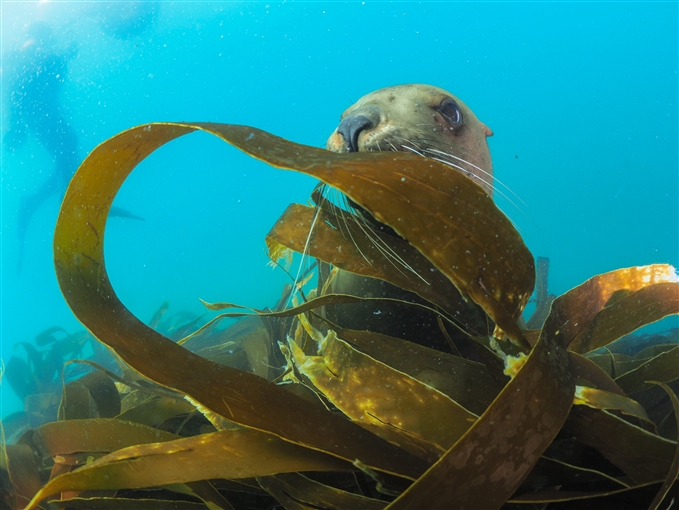
Marcin Dobas • OM-D E-M1 Mark II • M.ZUIKO DIGITAL ED 8mm 1:1.8 PRO
• PT-EP-14 • PPO-EP02 • UFL-3
Firstly, and most importantly we may add, you should know that Kamchatka offers a surprisingly unique and variable underwater world – more than 350 species of fish, seals, sea lions, sea urchins, sea otters, king crabs and octopuses can be found at that magical place. Starfish of all sizes and big shoals of jellyfish will be your model and serve as wonderful photo objects. Is that all there is? No. If you’re lucky enough, walruses, whales and the beautiful orcas will also find their way to you – and your lens.
As wonderful as this may sound, the underwater world of Kamchatka is unpredictable, unbridled, harsh and frightening. And yet, it is one of the most impressing cold water diving spots there are. It is characterized by rocky landscapes that are covered by countless sea urchins, actinias and different types of seaweed. Moreover, strong currents, thermoclines and ground swells can be expected at all times. That is why diving in Kamchatka isn’t really suitable for beginners. It is much more difficult and rough than elsewhere and is hence only recommended for experienced divers who have knowledge about diving in rough cold waters.
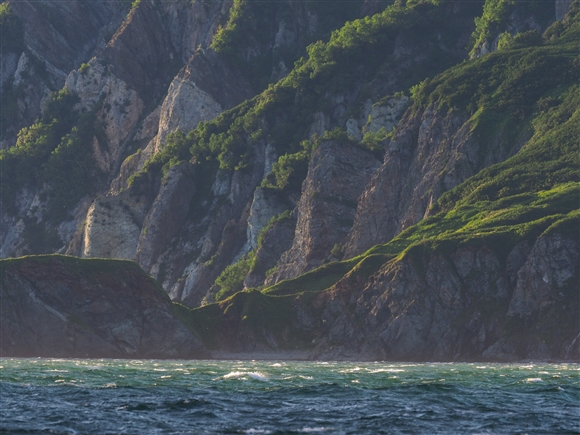
Marcin Dobas • OM-D E-M1 Mark II • M.ZUIKO DIGITAL ED 300mm 1:4.0 IS PRO • 1/250 • ISO 200
The eastern coast of Kamchatka (Pacific Ocean) is characterized by sheer cliffs and deep long bays. It is very interesting to dive here but also quite hard to handle. Strong rip currents are still strongly noticeable at quite a depth. They make diving a challenge and the diver feel like in the middle of the ocean. That’s why diving here, and in Kamchatka in general, is usually done in very small groups or in teams of two. It goes without saying that diving on your own and without a guide is something you shouldn’t do in Kamchatka. This location calls for good preparation, professional guidance and experience. If you keep that in mind, you can experience a once-in-a-lifetime dive at one of the diverse dive sites. There are a few of them and one popular bay is the Avachinsky Bay. It is said to be the second largest bay in the world (it’s a bit shocking that most of us haven’t heard of it, isn’t it?) and looks like a tiny sea itself. Diving here can be very tricky as you find spots with visibility of less than one meter. Still, if you manage to get through the ice cold and dirty water, you may be lucky to see sponges, seaweeds and small sea anemones in surprisingly bright colours.
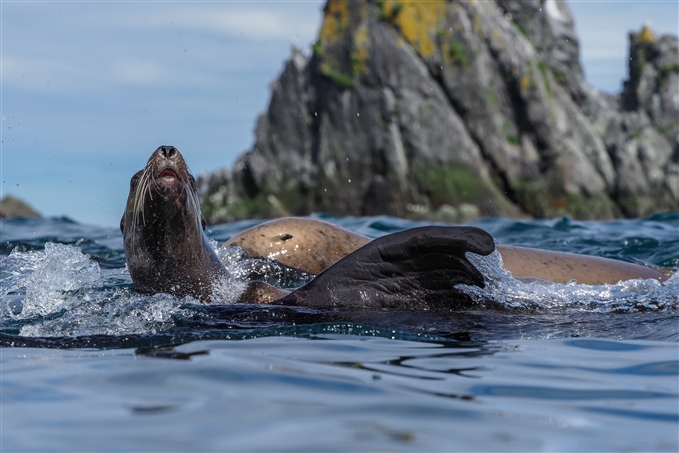
Marcin Dobas • OM-D E-M1 Mark II • M.ZUIKO DIGITAL ED 40-150mm 1:2.8 PRO • 1/1000 • ISO 200
Another spot to visit could be Russian Bay. This is where you find sea lions, huge rust-coloured sea lions to be exact. They have chosen this rocky place on the coast as their summer home. Once in the water nearby, you can get very lucky because sea lions, driven by natural curiosity, often get very close to divers to check them out. That could be your chance to create some wonderful close-ups.
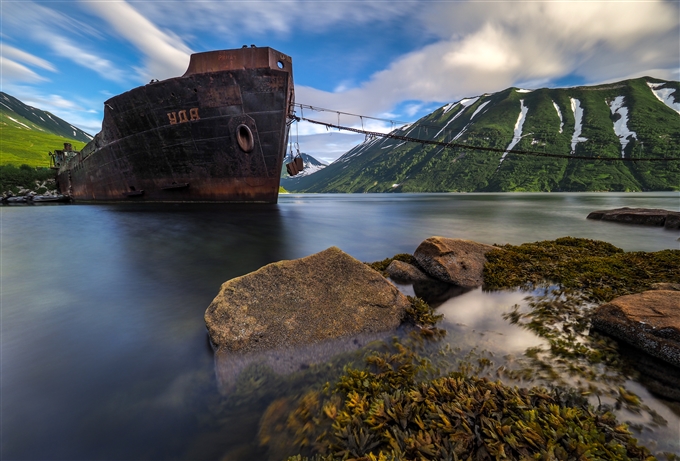
Marcin Dobas • OM-D E-M1 Mark II • M.ZUIKO DIGITAL ED 7-14mm 1:2.8 PRO • 25" • NISI ND filter • ISO 64
Having gained that knowledge, it should be worth a thought – if not even an actual plan – to go diving in Kamchatka. If you are a fan of extreme underwater photography, large and wonderful animals and maybe even some very interesting volcano landscapes in your non-diving time, Kamchatka could be a place for you.
Stay tuned for more Kamchatka diving experiences by Olympus Visionary Marcin Dobas. He has just recently travelled there, experienced wild bears and went diving with sea lions. Surely, we can expect some wonderful photographs and first-hand tips on our blog – coming soon!
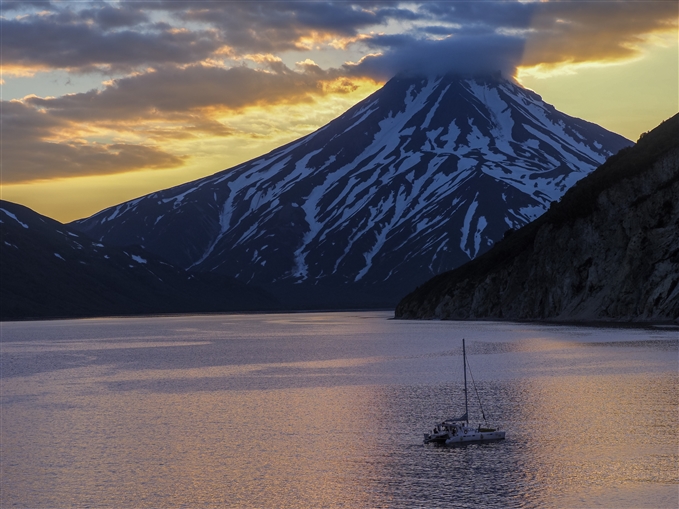
Marcin Dobas • OM-D E-M1 Mark II • M.ZUIKO DIGITAL ED 40-150mm 1:2.8 PRO • 1/800 • ISO 200
Comments
Show more comments (5)